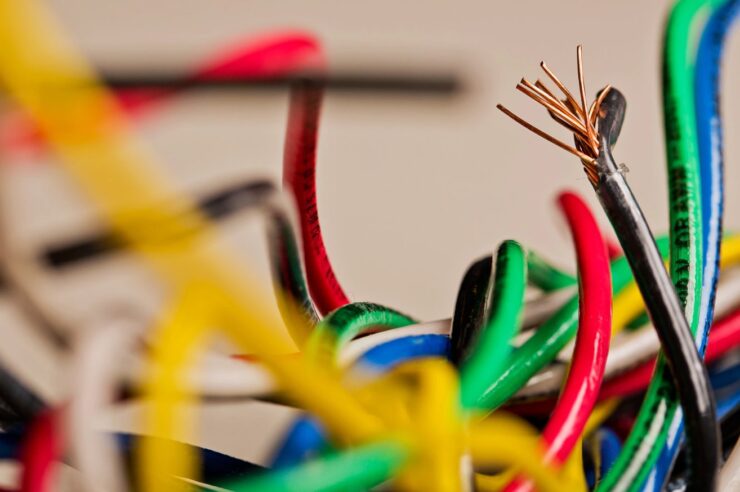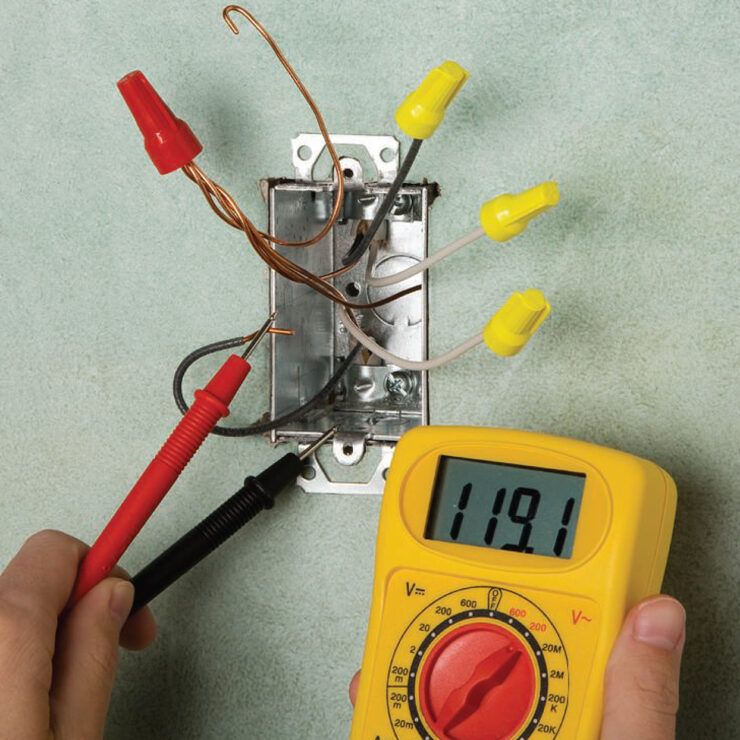How to use a multimeter to test voltage of live wires is a must known technique you need to know. The budget multimeter is a versatile tool that comes in handy when it comes to electricity. This review will show you how to use multimeter to test Voltage of live wires.
Multimeters are not just any tool; they are an indispensable digital tool that excels in measuring the Voltage, ampere, and ohms across Wires. Take note that dealing with live wires can be hazardous.
Live wires pack enough power to cause serious bodily harm and even death in some cases. So, it would be best if you take caution when carrying out this review.
To use a digital multimeter to test if a fixture is live or not in a household, set it to AC as that’s most likely the current source. In automotive electronics, it is most likely DC, so set the multimeter to DC and proceed with troubleshooting.
Once you understand the basics of how a multimeter works, using it is effortless. A standard multimeter has three parts – a screen, a selection knob, and two, three, or more ports.
Also, most of the multimeter’s screen is usually a four-digit panel. To select the parameter you want to measure, use the section knob while the ports are where you plug in two probes that you connect to the ground or circuit for testing.
What does It Mean to Check the Voltage of Live Wires

angi.com
When you say you want to check the Voltage of a live wire, it merely means you want to determine the potential difference between the live cable and any other wire.
In other words, you will be checking for the potential difference between the live and neutral wires, or live and earth wires. Mind you, the potential difference between a neutral wire and earth wire should be zero.
Nevertheless, if the wiring is faulty, it could carry the same amount of electricity as the Live Wire. In an AC circuit, the direction of the current flow is continuously alternating.
The current passes through the live Wire from the generator, then through your electrical appliance, and then returns to the generator through the neutral Wire, thereby completing the circuit.
So, you would be correct to say there is neither a positive nor a negative terminal when talking about an AC circuit. In summary, there are the same amount of current in the live and neutral wires; however, their potential difference differs.
The current flow can alternate 100 times a second or more. Note that a typical plug has a live wire, neutral cable, and earth wire, forming the complete circuit in our household.
How to Use a Multimeter to Test Voltage of Live Wires

Here are five steps that make using a multimeter to test the Voltage of live Wire effortless:
Step 1: Safety
When dealing with a live wire, or electricity, safety is paramount. It would be best if you even considered safety more than ever when dealing with AC as high as 120 or 220 V.
Observe the general safety precautions when using HVAC multimeter for electrical and electronic devices, like not touching a live wire with your bare hand. Even if you must move the cable, ensure you are wearing an insulating glove.
Also, be sure to switch the multimeter from DC to AC, whenever you want to measure an electrical value in an AC circuit. Lastly, ensure you always start your testing with the highest Voltage or current range.
Step 2: Set the Parameter to Voltage
Next, set the selection knob to Voltage. As we said earlier, you can use the multimeter to measure Voltage, Current, and Resistance. A typical multimeter can measure Voltages within the range of 200 mV to 600 V AC or DC.
In the multimeter voltage section, use the part labeled V and a straight line to measure DC voltage. Likewise, use the region labeled V and a wavy line to measure AC.
Where you decide to place the knob determines the accuracy of your reading. So, if you want to test the Voltage of your home socket, which is typically 220 V or 110 V in some countries, set the selection knob to AC.
Step 3: Plug in the Probes
After setting the selection knob correctly according to the type of current and magnitude of Voltage, you want to measure, plug the probes in the appropriate ports. Multimeters have two, three, or more ports depending on your type of multimeter.
If you own a classic three-port multimeter, it will come with the COM, mAVΩ, and 10A ports. Only use the 10 A port when measuring very high currents.
Conventionally, the COM means Common, and it is where you plug in the black probe, which you almost always connect to the negative or ground of the circuit. The mAVΩ port allows measurement of resistance, Voltage, current up to 200 mA.
Nevertheless, there is no difference between the red and black probes. Plug the probes into the COM and mAVΩ ports when you want to measure the Voltage.
Step 4: Using the Probes
Now that you have your probes all set up, you can proceed to the actual testing. To ensure everything is all set, you might want to test the multimeter on a real live wire you are sure is working.
Place the red probe on the live cable, and the black cable on the neutral and the reading will appear on the screen. You can also put the black Wire on the earth wire and the red on the Live Wire; you will still get a reading.
After testing and you’re sure it works, you can proceed to check any other live wire you want to test. Note that nothing terrible will happen when you twist the black and red Wire.
If you switch it by mistake, your voltage reading will become a negative number of the actual reading. This negativity is because a multimeter measures the Voltage of a live wire to the Common (COM) port.
Step 5: Taking Your Reading
If, after testing the Wire and you get a zero on the screen, there is no voltage on the Wire. In other words, no current is flowing through the Wire.
You can try to locate the power source to fix the issue if you know your way around the electrical wiring, but if you don’t feel free to call an electrician for support.
Cautions of Checking the Voltage of Live Wire?
When working on an electric circuit, there’s a risk of electrical hazards. When a body comes in contact with a live wire, current flows through the body to the earth. This flow can cause serious injuries or even death in some cases.
As a matter of safety, it is best always to wear safety rubber gloves when handling electricity. While managing a multimeter, do not let the probes short circuit cause it will create a large spark.
Also, be careful not to work on a live wire with wet hands. Water can partially conduct electricity, which can cause a hazard. If you have a tester screwdriver, you can use it to test if there is current on the Wire before using a multimeter to measure how much Voltage is passing through.
By doing so, you can be a bit extra careful as the tester screwdriver will flashlight if there’s current in the Wire.
Why is it Important to Check the Voltage of a Live Wire
Checking the Voltage of live Wire is essential for several reasons. Here are three of the most prominent reasons it’s important:
To Ensure the Power Supply Works Perfectly
People use a multimeter to measure the amount of Voltage passing through a wire. By doing so, you can ascertain how much Voltage is passing through the Wire and compare it to the expected Voltage.
A deficiency in the amount of Voltage supplied compared to the predicted Voltage tells you there’s a problem along the line of supply.
To Prevent Hazard
You can prevent hazards when you know there’s current in a live wire. Use a multimeter to check for the Voltage of a live wire to be sure. If there’s current in the live cables, then take measures to prevent exposure as such wires can case hazard.
To Fix a Problem
Another reason people check the Voltage of a live wire is to fix a problem. For example, a Cen-Tech digital multimeter can tell you the amount of Voltage supplied to a malfunctioning socket.
By knowing the amount of Voltage provided to it, you can quickly diagnose where the problem is likely coming from to fix it.
Conclusion
In conclusion, a multimeter is an essential tool in the arsenal of any electronic enthusiast. And because it is a multimeter, it gives you the ability to do more than measuring the Voltage; you can also measure the amperage and resistance across wires.
Also, have it at the back of your mind that electricity can be hazardous. If you have doubts about your ability to measure the Voltage of a live wire, ensure you consult a qualified electrician.
